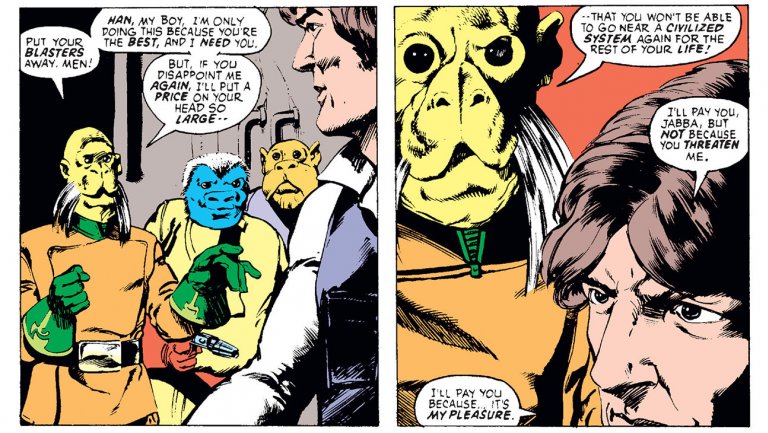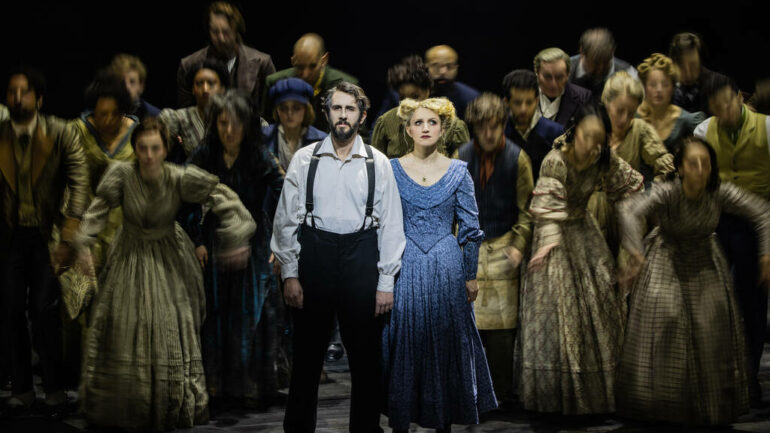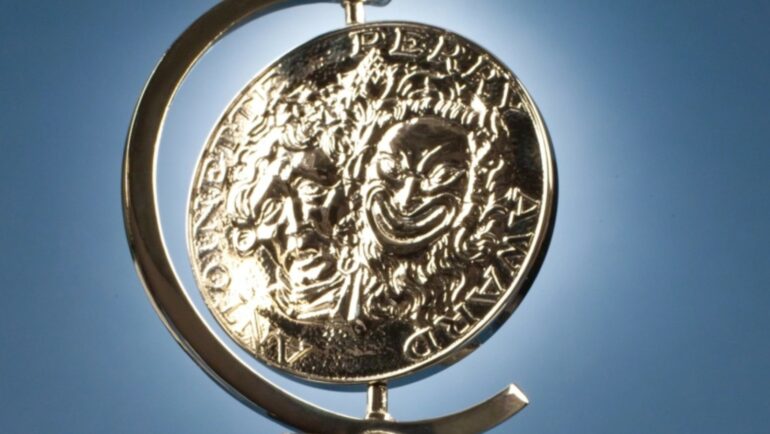It’s not merely that the comic includes scenes that wouldn’t appear onscreen until the 1997 “Special Edition” re-release, although that’s certainly the case. In the first issue, Luke meets Biggs early enough in the story that Biggs can tell him that he’s joining the Rebellion. (“You’re crazy!” Luke says in response, “You could wander around forever trying to find them.”) In the second, a Jabba the Hutt shows up that looks nothing like any version that would appear onscreen, to warn Han not to cross him.

What’s perhaps more noticeable is the tonal shift of the comic book version of the story. Reflecting the style of the time, the comic book Star Wars is amazingly, garishly colorful in ways that the movie purposefully rejects: According to Marvel, the Death Star’s walls are alternately pink or baby blue, and Darth Vader’s armor is actually blue with the eyepieces of his helmet occasionally bright red. Darth Vader himself is more given to expositionary exclamation than his movie counterpart (“The fool is dead!” he yells after killing a Rebel guard in the first issue), with the narrative demands of the comic format forcing many characters to explain what they’re up to in ways that are unnecessary onscreen. Thomas also enjoys adding flourishes to dialogue and narration which, while fun and attempting to build the universe around the story, seem fascinatingly “wrong” from today’s perspective.
(Much of the joy of the early Marvel comics comes from the way in which they’re off-model from the canonical version of characters and events the audience knows so well today, especially in the initial original storylines following the events of the first movie. To this day, the giant green talking rabbit Jaxxon is a fan-favorite despite being patently ridiculous even for Star Wars.)
The first issue of the series features two brief editorials; the first extols the virtues of the upcoming movie in glowing terms, describing the comic as “a six-issue prospectus on a startling piece of cinema” and describing the soon-to-be-released movie as, somewhat presciently, “certain to become a milestone in the space fantasy genre.” The second, by Thomas himself, goes into the origins of the comic in the then-traditional chummy Marvel manner. “Within a couple of days, Smilin’ Stan Lee had seen my enthusiasm and figured, I guess, that ‘What the heck, it’ll give the Kid something to do,'” he explains.
Read today, the Marvel Star Wars comics are a fascinating glimpse into the uncertain origins of the franchise that the movie would spawn, and the phenomenon that it would become. They’re messy and non-canonical and all the better for it — and they’re also the only time anyone would ever see Darth Vader use the Force to grab himself something to drink.






















Post comments (0)